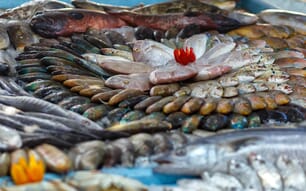The price rises were attributed to India's growing appetite for fish owing to rising per-capita incomes, urbanisation and ever-evolving eating patterns, which are rapidly leading to depletion and over-exploitation of fish stocks in the country, according to the Associated Chambers of Commerce and Industry of India (ASSOCHAM).
“While index value of fish was just over 126 during 2008-09, it rose past 291 as of 2012-13 due to a combination of factors like falling fish catch owing to rising water pollution, dumping of plastic and other harmful materials, absence of organized retail in fish trade, persistence of age-old distribution system, post-harvest losses, rising operating costs due to unabated diesel price rise and other such reasons resulting in high wastage and spoilage of fisheries resources,” according to a sector-specific analysis of fish prices conducted by ASSOCHAM.
Even the growth of fish production has declined to half, i.e. from about seven per cent in 2008-09 to just about 3.5 per cent during 2012-13, highlighted the analysis.
“Wholesale inland fish prices rose by a whopping 200 per cent and marine fish prices rose by about 91 per cent during the aforesaid period,” said D.S. Rawat, national secretary general of ASSOCHAM while releasing the chamber’s analysis.
“Rising fish prices has made the business financially unviable for fishing community and all the stakeholders, traders, processors and others involved in fishing related ancillary operations,” said Mr Rawat. “Growing urbanization and advent of supermarkets has lead to growth in fish consumption across India but lack of poor post-harvesting equipment, inadequate food processing technology and storage facilities is bleeding the fishing industry and thereby significantly hampering its growth prospects.”
Furthermore, India's traditional fishing communities are over-exploiting coastal waters thereby leading to fast depletion of marine resources and shrinking catch from coastal regions.
ASSOCHAM has also highlighted that due to severe dearth of suitable fishing vessels fish stocks in India’s territorial deep-sea waters remain untapped leading to potential income loss to fishing community and other stakeholders.
Lack of proper post-harvest fish handling infrastructure in India leads to wastage of about 25 per cent of total fisheries resources thereby causing a staggering Rs 15,000 crore annual losses, according to ASSOCHAM.
Poor handling and processing of catch, inadequate packaging, and storage facilities clubbed with marketing malpractices and other related factors are leading to massive losses to India's worth Rs610-billion marine and fish industry.
ASSOCHAM has advocated for carrying out eco-friendly and sustainable practices of fisheries resources, establish cold-storage facilities and there is also the need to bring in regulations to curb over-exploitation in marine habitat.
With over 8,100 kilometres of marine coastline, four million hectares of reservoirs, two million hectares of brackish water and nearly 51,000 square kilometres of continental shelf area, India is ranked as the second largest fish producer in the world after China and accounts for nearly six per cent of global fish production of about 180 million tonnes.
In wake of plummeting fish production in India, ASSOCHAM has suggested developing technology for value addition and infrastructure for fish production based on public private partnership (PPP) model.
There is also a need to innovate and intensify methods to enhance production, which in turn would help increase India’s share in global markets and increased foreign exchange earnings.
There is also the need to modernise fish markets across the country by setting up refrigerated storage facilities together with transport and handling/logistics support in the marketing centres.
Proper awareness and training about usage of latest technology must be imparted to fishermen so that they are able to commercially exploit fishery resources for domestic and export markets.
Furthermore, the industry also needs to go through process of re-engineering to be able to meet growing needs of domestic market for processed, packed and canned fish.
“More investments should be made in value added fish and marine products in ready-to-eat and ready-to-serve categories more so as growing domestic market also offers opportunity for such products in the fast growing retail sector,” according to the ASSOCHAM analysis.
There is also a need to nurture, protect and carefully exploit marine capture as the industry is directly linked to India's food and nutritional security.
ASSOCHAM has also called for an integrated approach for conservation and development of India's marine resources and has also recommended that utmost care should be exercised in judicious exploitation of marine resources thereby protecting the flora and fauna of the marine world.


